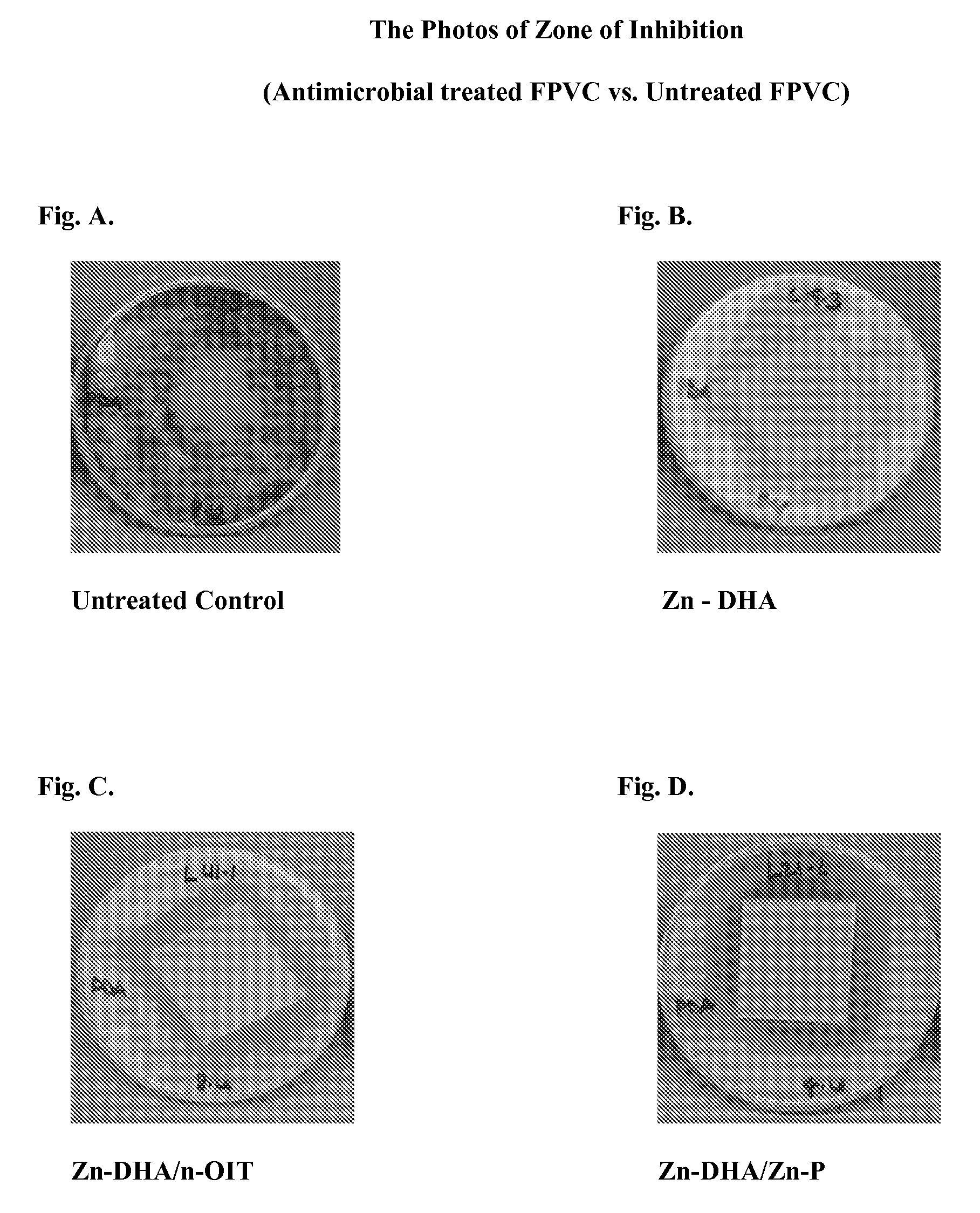Salts of Dehydroacetic Acid as an Antimicrobial for Plastics
a technology of dehydroacetic acid and antimicrobial plastics, which is applied in the field of plastics, can solve the problems of plasticizers being particularly susceptible to bacteria and fungi, allergic reactions, and embrittlement of plastics, and achieves the effects of antimicrobial, high heat processing, and good for the environmen
- Summary
- Abstract
- Description
- Claims
- Application Information
AI Technical Summary
Benefits of technology
Problems solved by technology
Method used
Image
Examples
example 1
Fungal Resistance Discussion
[0050]The fungal resistance test results are listed in Table 1. While the Untreated Control showed maximum fungal growth (fungal growth rating of 4), Zn-DHA, and its blends: Zn-DHA / n-OIT (octylisothiazolinone), Zn-DHA / Zn-P (Zinc-Pyrithione), and Zn-DHA / Tebuconazole, demonstrate total fungal resistance (fungal growth rating of 0).
[0051]Consequently, flexible PVC without Zn-DHA (e.g., the “Untreated Control” of Example 1) is subject to fungi and other microbial attack. These fungi and other microbes can generate odors, cause pitting and discoloration, and lead to loss of mechanical properties. In contrast, the plastic of the invention (e.g., the “Samples” of Example 1), display total resistance to the fungal growth, avoiding such detrimental effects.
Example 2
Zone of Inhibition Test (Modified ASTM G21)
[0052]A fungal inoculum was prepared. The fungal inoculum consisted of five species (test organisms): Aspergillus niger ATCC 9642, Aureobasidium pullulans ATCC...
example 2
Zone of Inhibition Test Discussion
[0056]While the Untreated Control does not provide any Zone of Inhibition (ZOI), Zn-DHA treated flexible PVC provides a small ZOI, a blend of Zn-DHA and n-OIT and a blend of the Zn-DHA and Zn-P treated flexible PVC have a large ZOIs.
[0057]In contrast to the Fungal Resistance Test of Example 1, the Zone of Inhibition Test of Example 2 provides a range of results using various embodiments of the invention. Thus, while not shown in the drawings, the combination of Zn-DHA and Tebuconazole provided antimicrobial activity without registering a “+” ZOI around the plastic. Consequently, combinations within the parameters of the invention can be engineered and / or formulated to provide various unique efficacies, e.g., antimicrobial-on-plastic in combination with an antimicrobial-free zone thereabout.
PUM
| Property | Measurement | Unit |
|---|---|---|
| temperature | aaaaa | aaaaa |
| temperature | aaaaa | aaaaa |
| temperature | aaaaa | aaaaa |
Abstract
Description
Claims
Application Information
 Login to View More
Login to View More - R&D
- Intellectual Property
- Life Sciences
- Materials
- Tech Scout
- Unparalleled Data Quality
- Higher Quality Content
- 60% Fewer Hallucinations
Browse by: Latest US Patents, China's latest patents, Technical Efficacy Thesaurus, Application Domain, Technology Topic, Popular Technical Reports.
© 2025 PatSnap. All rights reserved.Legal|Privacy policy|Modern Slavery Act Transparency Statement|Sitemap|About US| Contact US: help@patsnap.com

